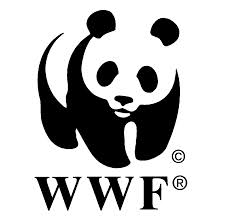In 1961 the WWF (World Wild-Life Fund) launched an international effort to protect the Black Rhino, as well as many other critically endangered species. In 1986 the IUCN also launched a world wide awareness for the fact that the Black rhino had become endangered. South Africa, the largest houser of the endangered Black Rhino, has also been sectioning off many wildlife sanctuaries to protect the Rhino population. The WWF campaign has helped the Black Rhino community grow from 2,410 individuals in 1995 to 4,880 in 2010. The WWF has established a strong infrastructure to help the Rhino population grow by stopping poaching. They have also improved laws and the enforcement of those laws, and improved the tracking illegal ivory trade better.
One of the largest concentrated Black Rhino populations is in Namibia. The majority of the rhino population in Namibia is located in Etosha National Park, a large game reserve housing multiple other endangered species aside from the Black rhino. Although the rhino population increased within the park, the rhinos are still at risk. The demand for rhino horn is still large in Asia. The WWF along with the environmental service workers of Namibia keep close watch of the park and of the Rhino population within the park ensuring the Rhinos safety.
The video below is of the Rhinos in Etosha national park:
The WWF is also developing a world-wide network of all Rhinos by keeping close track of Rhino Horn DNA. In doing so less Rhinos will be at risk, not only in Namibia, but around the world. Traffic, the worlds largest animal trades manager along with WWF has been a great help in overseeing and preventing the illegal trade of Rhino horn. Traffic’s goal by 2020 is to greatly reduce the illegal trade of endangered animals and its unsustainable costs.



Dillon – You have great information, images, and video on this page, but there are some minor issues that need to be fixed. WWF stands for “World Wildlife Fund” not “World Wild-Life Foundation”. You should add the word “individuals” after “2,410” in the second sentence. Also, what laws are you referring to in the 1st paragraph. You should at least put what Country passed the Laws if you can not find the names of the laws. And what does TRAFFIC stand for? Who is TRAFFIC?